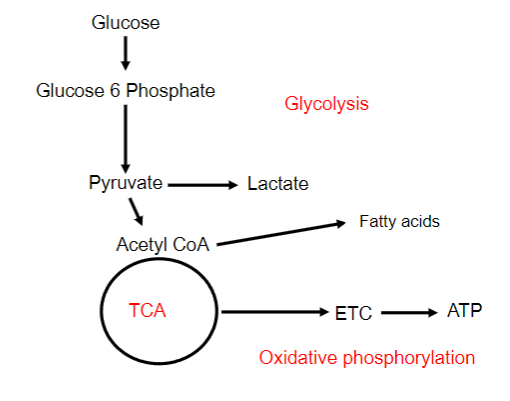
Energy Metabolism (Energy II) (The Living Cell)
Learning objectives Describe the difference between anabolism and catabolism Describe the importance of glucose as a source of energy Outline the key elements of glycolysis, including the important intermediates formed, key regulator steps and the products formed Describe the role of lactate and NAD+ in the continued production of ATP in muscle in the absence of oxygen Describe the relationship between glycolysis and the tricarboxylic acid cycle (TCA) and oxidative phosphorylation Outline the key elements of the TCA cycle including the important intermediates formed, key regulator steps and the products formed Describe how oxidative phosphorylation generates ATP and the role of oxygen in this process Outline how the generation of a proton gradient can lead to the formation of ATP Describe how mitochondria present in brown fat differ from mitochondria in other cells Describe the biological significance of compartmentalisation
-
What happens to pyruvate when oxygen is available? (6)
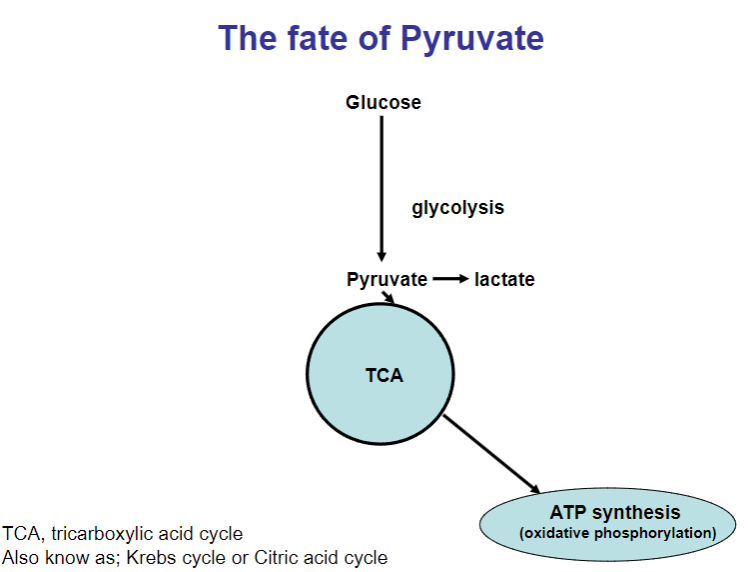
-Pyruvate Transport to Mitochondria
-Conversion to acetyl-CoA
-Citric Acid Cycle (Krebs Cycle)
-Electron Transport Chain (ETC) and Oxidative phosphorylation
-ATP Synthesis
-Oxygen as the Final Electron Acceptor
-
Where does aerobic respiration take place?
In the mitochondria
-
Does aerobic respiration yield more ATP than anaerobic respiration?
Yes
-
Outline the steps of the TCA cycle:
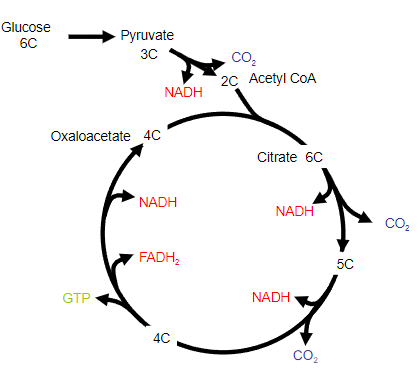
1)Takes place in the mitochondrial matrix
2)In the presence of oxygen, pyruvate is converted to acetyl CoA (2C) and enters the citric acid cycle
3)Acetyl CoA reacts with Oxaloacetic acid (4C) to form citrate (6C)
4)Citrate undergoes a series of reactions resulting in the loss of 2 CO2 molecules
5)Three molecules of NADH and one FADH2 are formed per cycle
6)One GTP molecule is formed
7)ATP is not produced in the citric acid cycle
-
What are the products and reactants of the krebs cycle? What happens to some of these molecules?
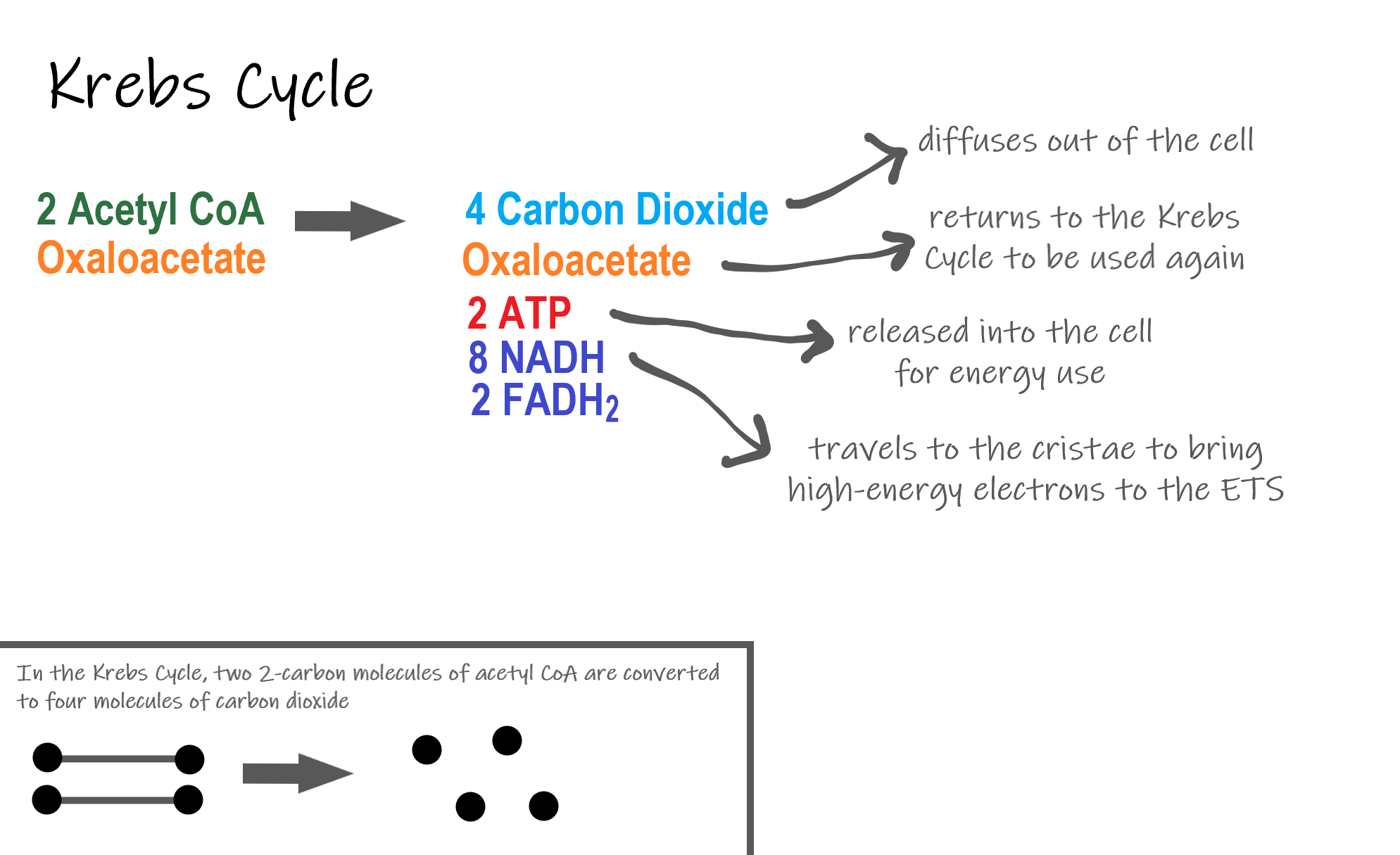
-
Not only is this cycle the common final pathway of aerobic oxidation, it is also the source of what?
Building blocks for important bio-molecules
-
Is the formation of acetyl-COA from pyruvate reversible? What happens after?

NO
It is irreversible
• This commits the glucose carbon skeleton to either oxidation to CO2 and energy production or Fatty Acid synthesis.
-
What does Pyruvate dehydrogenase do?

-Pyruvate dehydrogenase converts pyruvate, a product of glycolysis, into acetyl CoA
-Acetyl CoA enters the Tricarboxylic Acid (TCA) cycle for further energy production
-
Pyruvate dehydrogenase is inhibited by what?
NADH and Acetyl CoA
-
Pyruvate dehydrogenase is also regulated through what?
Phosphorylation by a kinase and a phosphatase
-
How does Pyruvate Dehydrogenase Phosphatase and Pyruvate dehydrogenase Kinase regulate entry of Pyruvate dehydrogenase into the TCA?

-
What is the role of calcium in TCA cycle?
• In muscle pyruvate dehydrogenase phosphatase is stimulated by Ca2+
• In liver adrenaline increases Ca2+ through the activation of alpha adrenergic receptors and IP3
• In liver and adipose tissue, insulin (which signifies the fed state) stimulates the phosphatase which funnels glucose to Fatty Acid synthesis
-
Can you provide more detailed steps of TCA cycle?
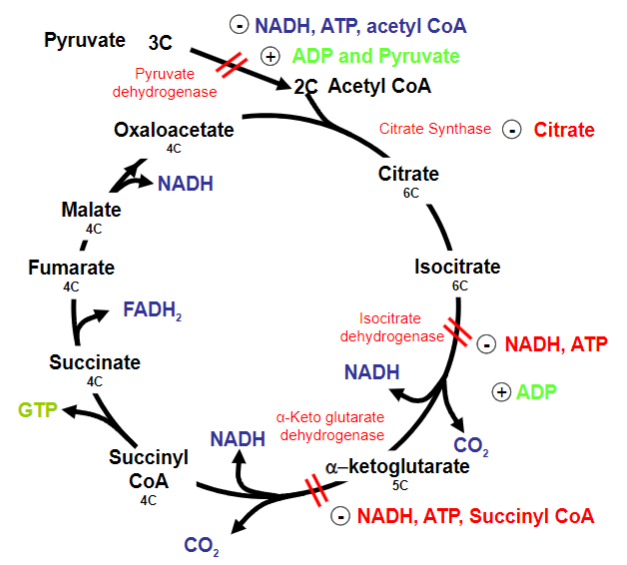
-
What enzymes are used in TCA cycle? (4)
-Pyruvate dehydrogenase
-Citrate synthase
-Isocitrate dehydrogenase
-a-Keto glutarate dehydrogenase
-
What is Beriberi (1)? State some information (4)
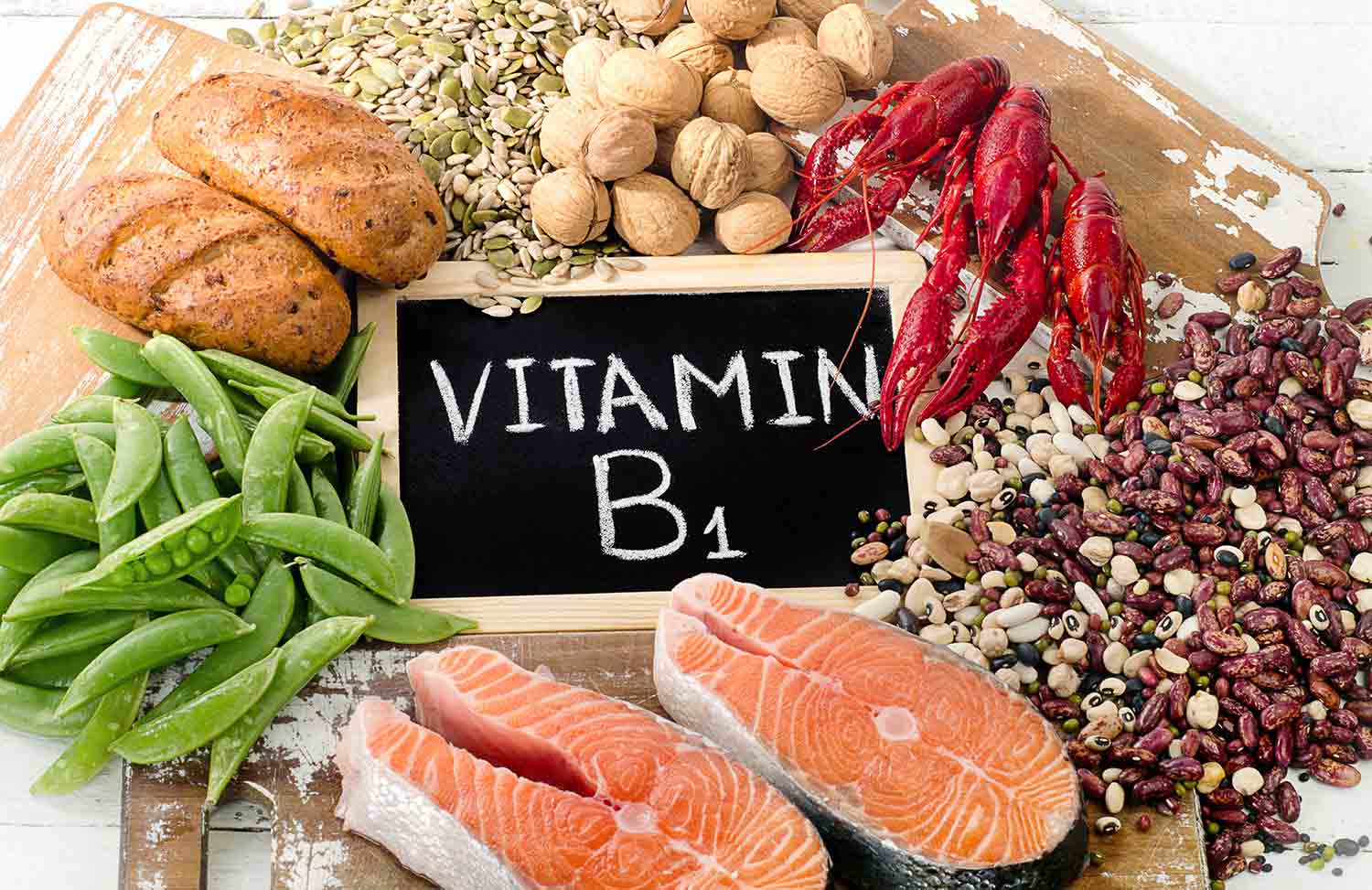
• Is a deficiency in thiamine (Vit B1)
• Common in places where rice is a staple
• Thiamine is a prosthetic group for pyruvate and a-ketoglutarate dehydrogenase
• Characterised by cardiac and neurological symptoms
• Neurological problems are common as glucose is the primary source of energy
-
What happens to the NADH and the FADH2 produced in the TCA cycle?
Electron Transport Chain (ETC):
NADH and FADH2 transfer electrons to the ETC on the inner mitochondrial membrane
Electron Transfer and Proton Pumping:
Electrons move through protein complexes, pumping protons and creating an electrochemical gradient
Oxygen as the Final Electron Acceptor:
Oxygen combines with electrons and protons to form water, concluding the ETC
ATP Synthesis:
The proton gradient drives ATP synthesis by ATP synthase in oxidative phosphorylation
FADH2 Contribution:
FADH2, entering the ETC later, contributes to proton pumping, generating less ATP than NADH
-
Can you outline the steps that occur in the Electron Transport Chan? (diagram answer)
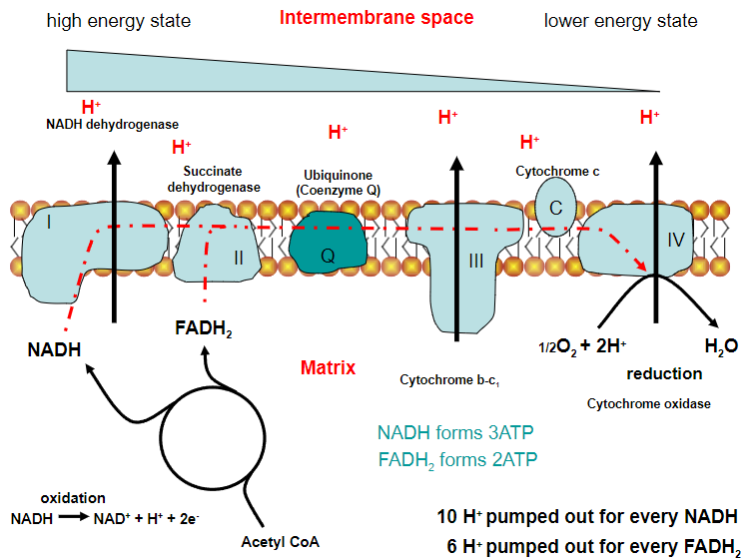
-
What does ATP Synthase do? (5)
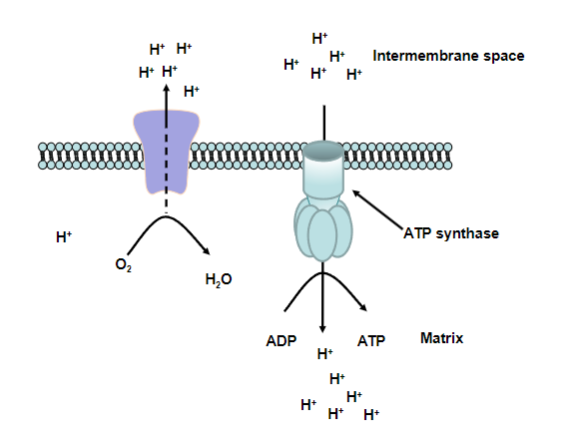
Proton Gradient Formation:
During the ETC, protons are pumped across the inner mitochondrial membrane/ the intermembrane space
Proton Flow Through ATP Synthase:
ATP synthase, acting as a molecular machine, utilizes proton flow to induce mechanical changes
Mechanical Energy Conversion:
The spinning rotor converts mechanical energy into chemical energy.
ATP Synthesis:
ATP synthase catalyzes the synthesis of ATP from ADP and Pi in response to the mechanical changes.
Release of ATP:
Newly synthesized ATP is released and becomes available for cellular energy needs
-
What does brown fat do?
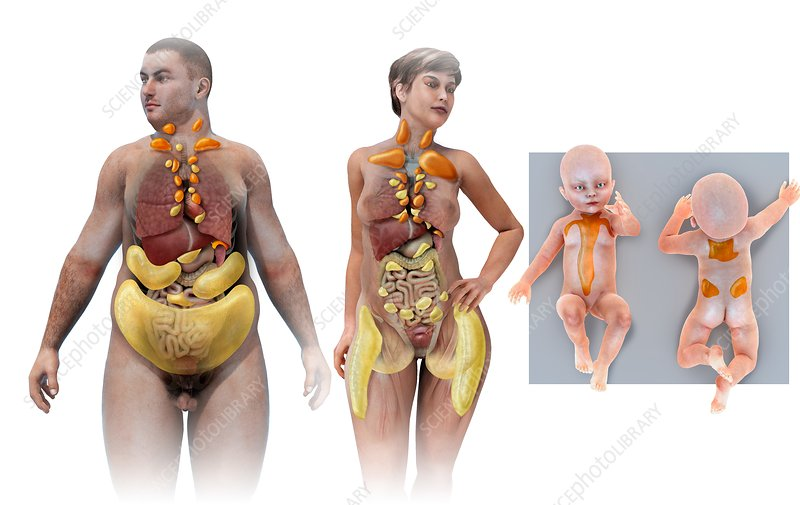
Brown Fat (Brown Adipose Tissue - BAT):
Brown fat is rich in mitochondria, which contain a unique protein called uncoupling protein 1 (UCP1)
UCP1 allows brown fat mitochondria to uncouple the process of electron transport from ATP synthesis, leading to the generation of heat instead of producing ATP. This process is known as non-shivering thermogenesis.
The primary role of brown fat is to generate heat and help regulate body temperature, especially in newborns and small mammals
-
What does white fat do?
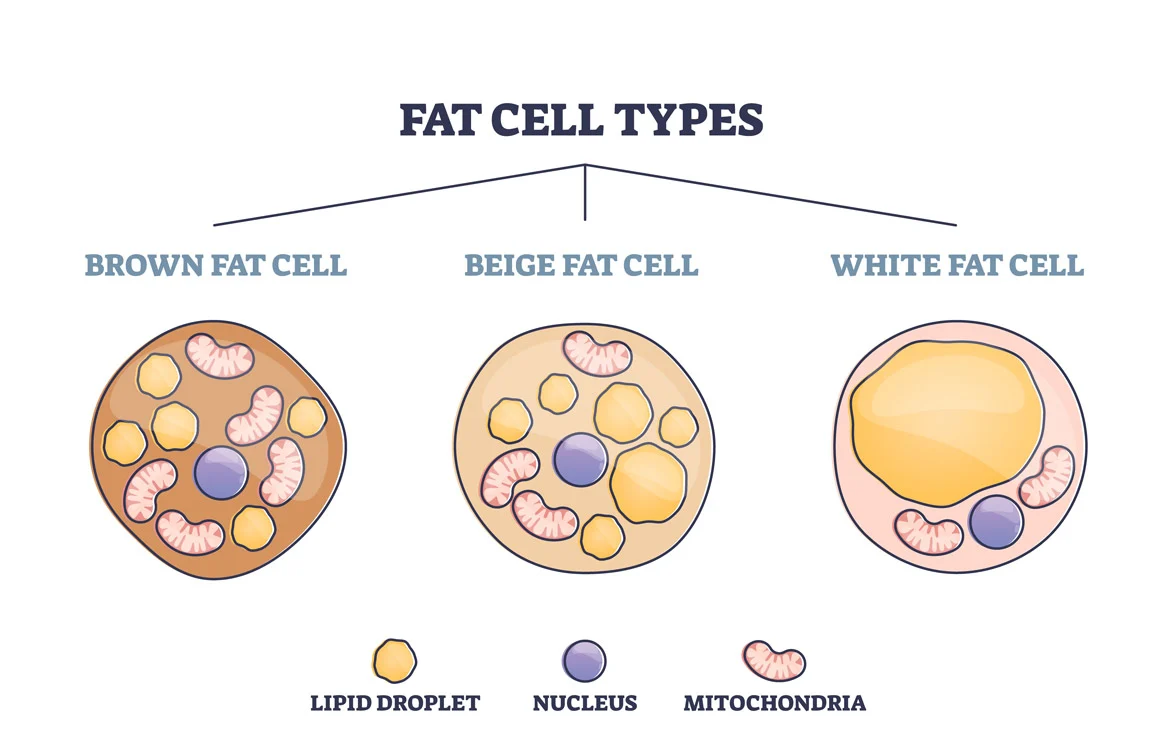
White Fat (White Adipose Tissue - WAT):
White fat is the more common type of adipose tissue and is involved in energy storage
White fat cells store excess energy in the form of triglycerides, serving as an energy reserve for the body
Unlike brown fat, white fat is not specialized for heat generation
-
What are OXPHOS (oxidative phosphorylation) diseases? Causation? Symptoms? What are these differing symptoms dependent on? Metabolic consequences?
• Common degenerative diseases
• Caused by mutations in genes encoding proteins of ETC
• Symptoms, including fatigue, epilepsy, dementia
• Dependent on the mutation, symptoms may be evident near birth to early adulthood
• Metabolic consequence can be congenital lactic acidosis
-
Picture outlining a general summary:
